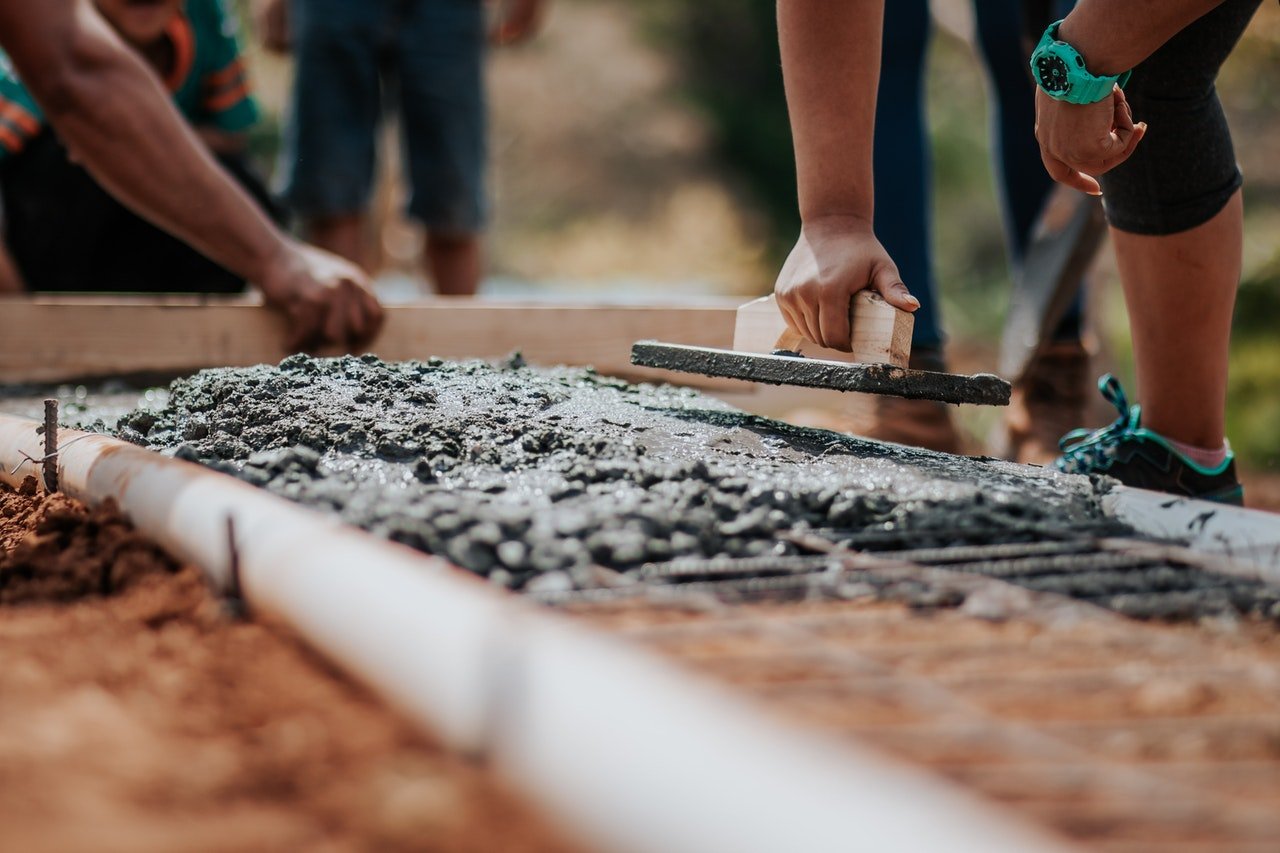The most efficient way to lay concrete for large commercial projects is hire a professional for Ready-mix concrete. If you are a builder in Kent and surroundings, RMS Concrete is here to help you with all your Ready mix Concrete Kent requirements. However, for small reconstructions and DIY renovations, you can always put your muscles to use, lay the concrete yourself and save some money! We agree that laying concrete slabs for the very first time can be slightly daunting but trust us. It is as rewarding as it is challenging. With a little bit of patience, diligence, the right technique, and this detailed six-step guide by the experts of Ready Mix Specialists, London, your DIY project will feel like a breeze.
Our guide takes you through the six necessary steps of laying concrete. From preparing the ground, making the concrete, effectively pouring and maintaining the concrete, we have covered it all. Read on to become an expert in DIY projects.
A Simple Guide for beginners to Laying Perfect Concrete Slabs
1. Ground Preparation
The first step for laying concrete is preparing your ground/site for concrete. Firstly, you will have to measure the area that you want to pour the concrete. After determining the exact measurements, we recommend you contact the utility company and ensure there are no pipes, water lines, or a power line underneath the area you aim to dig. Once the location is safe to dig, clear the area by removing all the unnecessary debris like sticks, stones, twigs, etc., to make sure they don’t cause any damage to your concrete.
Next, begin leveling the ground. You can use a 48- to 72-inch-long level to check that the floor is perfectly level. It is essential to level the ground as an uneven base will lead to slab cracking and air pockets which ultimately sacrifice the structural integrity.
2. Build up a strong Subbase
A Subbase is a foundation on which the concrete rests. Having a strong and durable foundation is very important for a solid structure. You have to start the process by laying a subgrade. A subgrade is basically the layer of soil, granular, or road base underneath your concrete. The stronger your subgrade, the better your concrete. Make sure to properly compact and stabilize your subbase before you move on to adding the subbase.
Once your subgrade is in place, begin laying the subbase. Ideally, your subbase should be 4-8 inches (10-20 cm ) thick for home projects. Then use a hand tamper or a plate compactor to compact your subbase.
3. Reinforce your concrete
Almost every concrete job requires reinforcement for the concrete slab to ensure structural integrity and durability. You can either use a wire mesh or steel bars to reinforce your slabs. They will protect your concrete from the spreading and growth of small cracks and offer stability across two axes. We recommend hiring a professional concrete contractor for this step as it is a labor-intensive task and may require trade experience and professional tools.
4. Ordering the concrete
You can always mix the concrete at the site, but ordering ready-mix concrete from a trusted professional concrete supplier will make your job a lot easier. Once you’re done with the initial preparations, contact a trusted ready-mix supplier to arrange a delivery date and time. Before delivery, prepare your site, ensure that there is ample space for the truck, and all the necessary tools and equipment are present at the delivery site. You may also require labor, so make arrangements for that.
5. Concrete Pouring
Once your truck arrives, you can transfer the concrete into wheelbarrows, or if it’s possible, pour it directly from the vehicle. Please ensure that the pouring process is as quick as possible, so the consistency doesn’t falter or, worse, set. While doing this, you can appoint some helpers to spread the concrete so that it remains even. The next in line is screeding and applying a smooth finish.
6. Maintaining the concrete
Once the entire process is done and you are satisfied with your DIY concrete venture, it is now time to enjoy your driveway/patio or any other construction you’ve done. All you have to do now is properly maintain it. Although concrete is one of the most ‘hassle-free surfaces, it may still require a little maintenance. Regular soap and water maintenance will help keep the concrete durable and looking its best.
Final Thoughts
We hope that this guide will help you get sorted for all your small projects. For more details on concrete mixing, concrete pumping, and any other queries, contact our RMS Concrete team on 02081312933. Hire us for your Ready-mix-concrete Kent requirements and receive high-quality concrete at extremely competitive prices.





